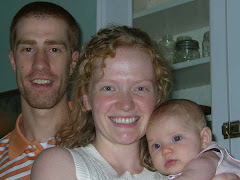How To Create a Culture of Reproduction
Dave Ferguson, Community Christian Church, Chicago-land
Movement Leader of "The New Thing Network"
A HISTORY –
1988 – (Reproduce Cells) 5 leaders lead small-groups. Every group had an apprentice. Every ministry area would have an apprentice, that reproduces leaders and workers at every level. Those churches that are most effective at reproducing churches, already reproduce leaders through apprenticeship
5 Steps Process:
- I Do, you watch, we talk
- I do, you help, we talk
- You do, I help, we talk
- You do, I watch, we talk
- You do, someone else watches…and it reproduces
1989 – Going to Multiple Services (Reproduce Congregations)
- Went to 2 services of identical twins
- Pro-active reproduction…don't wait till you need it, plan & prepare for it…artists, musicians, leaders, etc
- Don't form multi-sites because you have run out of space, do it once you have some leaders ready to go (LEADER READINESS is the trigger)
- Always talk about reproducing, send the leader, let the people do what they want when a leader goes to start something new.
1998 – Going to Multi-Campus (Reproduce Campuses)
- Went door to door – God surfaced new people…TREAT NON-CHRISTIANS LIKE THEY ARE CHRISTIANS UNTIL THEY REALIZE THEY ARE NOT.
2002 – (Reproduce Churches)
Now – Reproduce Networks of Churches
Chronically asking: "What's Next"
Reproducing Leaders and Artists
- We need to reproduce more and better leaders and more and better artists to be able to reproduce churches . Book: Leaders at All Levels – Ray Charan
- 2 Tim 2:2 – 4 Generations of reproduction…Paul to Timothy to Reliable Men to Others
- Reproduceable things are simple …we have made the church very very complicated. We must work to make things more simple. NAPKIN TEST – does it fit here, then it probably reproduces.
STEPS for LEADERS
- Apprentice leader
- Leader
- Coac
- Staff
- Campus Pastor
STEPS FOR ARTISTS
- Apprentice
- Second Chair
- Understudy
- Shadow
- 1st Chair
Apprenticeship Provides 4 Crucial Experiences
- Practice
- Feedback
- Correction
- More Practice
Uses Both Informal and Formal Approach in Reproducing…Formal Process Steps:
- Vision Cast
- Huddle…how's it going
- Skill Training
Multiplying Small-Groups
Eric Metcalf – CCC with Dave Ferguson
- Always apprentice before they lead…make potential leaders do this
- 5 Options
- In existing group they are already in
- Apprentice with a coach
- Apprentice with pastor
- Turbo small-groups…put potential leaders together to study small-groups
- Host led using DVD curriculum and learn from that OR use Field Guide Tool
- In existing group they are already in
- Leadership Expectations – a tool they use to help them understand what is expected
- R – Relational
- P - physical
- M – Mental
- S – Spiritual
- R – Relational
- Ministry Role Description that is area specific
- Every group has a leader, facilitator, host
- Annually take groups through core theology, core philosophy, core values
- Groups can have more than one apprentice
- Their groups are pretty homogeneous and don't have end times, other groups are driven by curriculum and end when its over
- We need lots of different environments to grow in our faith…small groups, one-on-one, large celebration, etc. Search to Belong – Joseph Myers
- All leaders in the ministry lead a small group…many benefits
Reproducing from Day One
Matt Larsen – CCC Trained EFCA Planter in California
Cast Vision from DAY 1
- Start the conversation of reproduction before you start your first church.
- Developing people's hearts for reproduction will juice people up.
- Start developing others before you start your church.
- Start with a church name that is reproducible…several locations will cause people to see the name everywhere
- Call your church-plant the first campus
- Hire staff that are reproducers
- Bring on a church-planting apprentice from day one, have them build their team even while you build yours'
Reproduce as Soon as You Can, Not Once You Have To
- Thinking this way changes the questions you ask
Develop a Permission-giving Culture
- Lead with a guest, God is the guest that leads
- God moves faster than we do, why do we hold back?
- Coaching so people are ready to play
Measure Reproduction Internally (Dashboard)
- Celebrating – privately with leadership community, publically with congregation
- Connecting – help people connect the dots to see what could be next for them
- Contributing – pipeline of people and provisions
Develop Clear Leadership Expectations
- Creates common standards so people know what to do
- Creates communication pipeline
- Model it ourselves
7 Steps in Starting a Church (see www.newthing.org)
- It is a heart & God thing first
- Vision
- Leader
- Team
- Finances
- Alignment
Unstoppable


